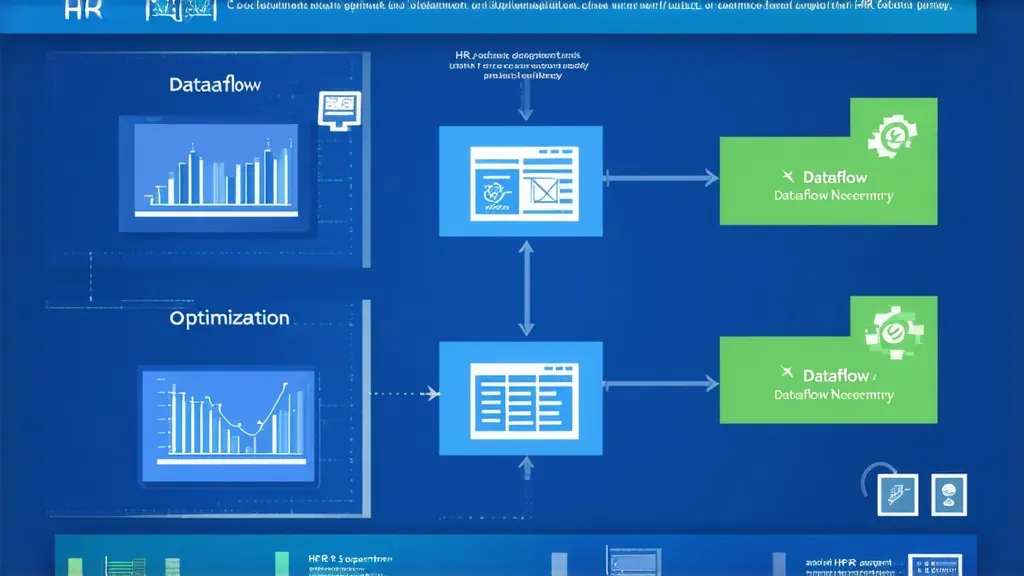Restructuring and Optimization of HR Dataflows with Alteryx
1. Title Page
Title: Optimization and Restructuring of Existing Alteryx Workflows in HR
Company: International Tax and Business Consulting Firm
Prepared by: Ing. Florian Zeba LL.B.
Date: 01.03.2024
2. Executive Summary
This case study outlines the optimization and restructuring of existing Alteryx workflows used by an international tax and business consulting firm. The workflows were responsible for aggregating and processing HR-related data to generate reports and dashboards for HR management. The project involved modularizing the workflows, enhancing flexibility, and optimizing data structures for faster processing. The results included reduced manual adjustments, faster data processing, and improved scalability for futu…
3. Introduction
Background: The consulting firm used Alteryx workflows to process HR data from various sources and generate insights for HR leadership via Power BI dashboards. However, the existing workflows were rigid and inefficient, often requiring manual adjustments for new data types.
Industry Context: In professional services, efficient HR data analysis is crucial for performance evaluation, workforce planning, and cost management.
Objectives:
- To modularize and automate the existing Alteryx workflows.
- To improve the performance and scalability of HR data processing.
- To enhance the structure of the data pipeline for faster Power BI reporting.
4. Problem Statement
The existing Alteryx workflows had significant limitations:
- Lack of Flexibility: Frequent manual adjustments were needed for new data types.
- Inefficient Data Structures: Redundant data and complex transformations slowed down processing.
- Scalability Issues: The workflows could not handle increasing data volumes efficiently.
5. Analysis of the Situation
SWOT Analysis:
-
Strengths:
- Existing Alteryx infrastructure in place.
- Experienced data analysis and reporting team.
- Strong integration with Power BI for reporting.
-
Weaknesses:
- Manual adjustments required for data transformation.
- Poor workflow modularity.
- Redundant and fragmented data structures.
-
Opportunities:
- Increased efficiency through automation.
- Enhanced decision-making with real-time data insights.
- Improved scalability to handle larger datasets.
-
Threats:
- Potential data loss or errors during workflow restructuring.
- Resistance from stakeholders due to changes in processes.
- Downtime during migration to optimized workflows.
Industry Analysis (PESTEL):
- Political: Increasing labor regulations requiring detailed HR reporting.
- Economic: Growing demand for cost-efficiency in HR operations.
- Social: Increased focus on employee performance and retention metrics.
- Technological: Advancements in data analytics tools such as Alteryx and Power BI.
- Environmental: Shift to digital record-keeping reducing paper waste.
- Legal: Compliance with GDPR and data privacy regulations.
6. Proposed Solutions and Alternatives
Solution 1 (Selected): Workflow Modularization and Automation with Alteryx
- Pros: Improved flexibility, faster processing, and reduced manual effort.
- Cons: High initial restructuring effort.
Solution 2: Use of External ETL Tools for HR Data Processing
- Pros: Ready-made solutions with less development effort.
- Cons: Additional costs and reduced control over workflows.
Solution 3: Maintain Existing Workflows with Minor Enhancements
- Pros: Lower implementation cost and minimal disruption.
- Cons: Limited scalability and continued manual adjustments.
Justification for Selected Solution: Solution 1 was selected due to its long-term benefits, including automation, flexibility, and enhanced performance.
7. Implementation Plan
-
Phase 1 (Workflow Analysis and Design):
- Conduct a detailed analysis of the existing Alteryx workflows.
- Identify inefficiencies and design modular, dynamic workflows.
-
Phase 2 (Modularization and Automation):
- Implement modular components in the Alteryx workflows.
- Develop dynamic transformation steps to handle various data types.
-
Phase 3 (Data Structure Optimization):
- Eliminate redundant data and normalize datasets.
- Reorganize data structures for compatibility with Power BI.
-
Phase 4 (Power BI Integration and Testing):
- Integrate optimized data structures into Power BI dashboards.
- Conduct performance testing to ensure faster query responses.
-
Phase 5 (Training and Documentation):
- Provide training to the data team on the new modular workflows.
- Document processes for future scalability and adjustments.
8. Results and Outcomes
- Enhanced Workflow Flexibility: The new modular design allowed easy integration of new data types without manual adjustments.
- Improved Processing Speed: Data processing times reduced by 65%.
- Optimized Power BI Reporting: Dashboards loaded 40% faster due to improved data structures.
- Scalability: The workflows can now handle 5x more data without performance degradation.
9. Lessons Learned
- Modularity Drives Efficiency: Modular workflows reduced complexity and increased adaptability.
- Data Structure Matters: Normalized data significantly boosted Power BI performance.
- Training Ensures Sustainability: Proper documentation and team training ensured the solution’s long-term success.
10. Conclusion
The project successfully optimized the client’s Alteryx workflows, resulting in faster, more scalable, and efficient HR data processing. The integration with Power BI dashboards was streamlined, enhancing decision-making capabilities for HR leadership. This solution laid a solid foundation for future data analytics initiatives.
11. References and Appendices
- References: Alteryx workflow designs, Power BI dashboard configurations, and project documentation.
- Appendices: Workflow schematics, performance test results, and training materials.
Any Questions?
Contact me on any of my communication channels:

